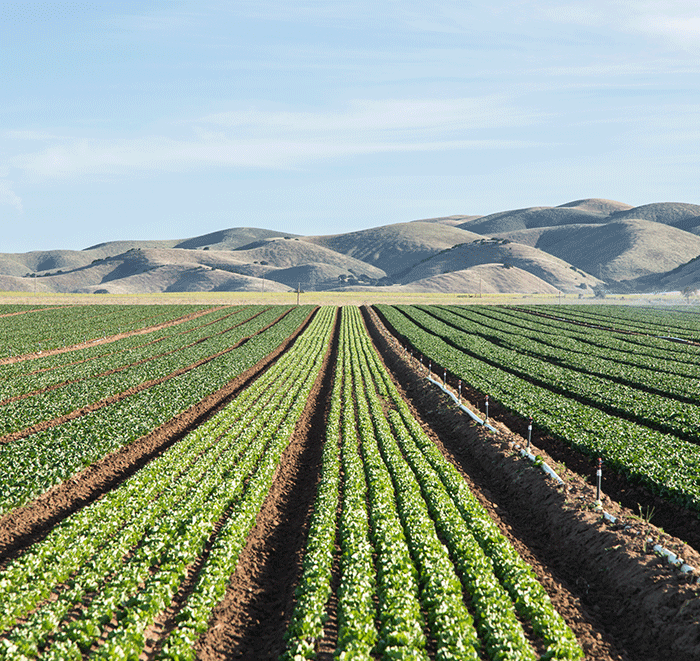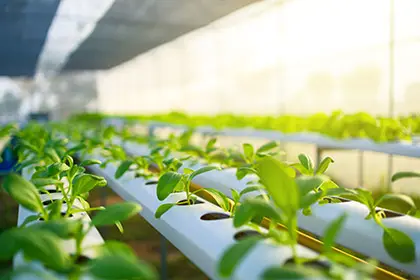
Is Controlled Environmental Agriculture the Future of Farming?
Other growers are evaluating the risks and benefits as they consider beginning CEA enterprises.
As believers in the future of agriculture, Wilbur-Ellis Agribusiness maintains that CEA plays an important role in modern farming and our future food system by improving access to affordable, high-quality, and nutritious produce. Its potential to offer consumers and supply chain stakeholders resilient, sustainable, local produce is becoming increasingly valuable in the face of rising input costs and environmental variability.
Wilbur-Ellis Strategic Account Advisor Moriah LaChapell recently shared some reasons for the growth of CEA, current and prospective market opportunities as well as implementation considerations.
What is CEA?
CEA includes indoor and vertical farming practices such as hydroponics, aeroponics, and aquaponics that create sustainable, optimized growing conditions while protecting crops from pests and diseases.
CEA encompasses a variety of systems ranging from simple shade structures in greenhouses to fully automated, closed-loop systems with controlled lighting, water, and ventilation. Sample growing facilities include the greenhouse, indoor vertical farms, container farms, and micro-farms. Each delivers tangible environmental and production benefits growers can realize quickly after adoption.
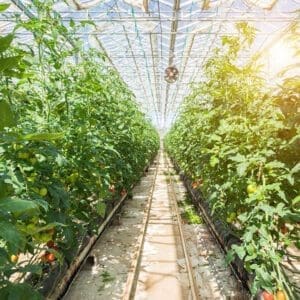
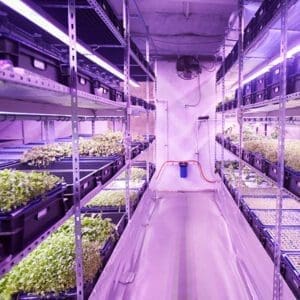
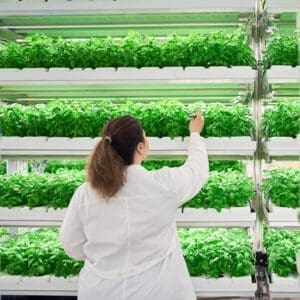

Benefits of CEA
“By growing produce in a closed ecosystem, CEA protects plants from harsh environmental conditions and maximizes limited resources including land and water,” said LaChapell.
In CEA facilities, everything plants need at their various growth stages is provided artificially, including water, nutrients, temperature, ideal humidity levels, ventilation, light, and CO2. In many controlled systems, plants are grown without soil in a solution of water and nutrients—enabling more, and faster, growth in less space than when planting in soil. With CEA, growers face fewer challenges from weeds, diseases, and insect pests.
By reducing the effects of seasonality and environmental influences, CEA thus increases crop yields, reduces input use, and allows for locally grown, quick-to-market produce. For example, indoor farms can use up to 95% less water than conventional farms, allowing growers in areas facing extreme water shortages to continue supplying local produce.
“CEA is an energy-intensive endeavor, but it shows promise as a way to improve access to fresh, local produce while meeting consumer and retailer expectations,” said LaChapell.
“It may just be the change we need to overcome food supply challenges on the horizon.”
Consumer demand increases opportunities for CEA
Research shows that the North American organic food market is expected to grow at a compound annual growth rate of nearly 13% from 2022 to 2030, with the pandemic being a major factor in increased consumption. In 2020, sales of organic foods in the U.S. grew by 14.2%—an increase of $1 billion—driving U.S. imports of more organic produce.
“CEA supports consumer and retail demand for a traceable and trustworthy supply chain and represents a significant business opportunity for interested growers,” said LaChapell.
“Indoor, organic production helps to improve food security for the U.S. and can reduce the need for imports as well as cost and delivery time to the consumer,” she added.
The business case for farmers—both rural and urban
According to investors, CEA is forecast to grow 5x over the next 10 years in the U.S., with growth driven not only by demand but also by the shrinking supply of agricultural land in the region, a challenging labor market, weather, and climate change, as well as a diversified crop offering and technology advancements that support cost-effective CEA.
Some major U.S. retailers are already relying more on indoor-grown upstarts because of increasing climate variability.
“CEA mitigates spoilage, reduces crop losses from the environment and pests, eliminates the need for pesticides, and returns the most consistent level of quality and nutrients,” said LaChapell.
Controlled environmental farming makes fresh fruit, vegetables, and legumes accessible to retailers and consumers any time of the year, supporting a consistent supply chain independent of weather or other uncontrollable factors associated with traditional agriculture. Local, indoor production also reduces food waste and increases produce consumption by decreasing cross-country transportation and related supply chain issues.
“CEA is growing quickly, and both rural and urban farmers have been able to benefit from small-scale CEA set-ups to diversify their produce and minimize their reliance on manual labor and/or inputs,” said LaChapell.
Considerations for CEA adoption
Currently, CEA is used to grow a variety of crops and plants, including tomatoes, cucumbers, peppers, leafy greens, herbs, strawberries, and cannabis. And there is potential to expand to other crops like berries, melons, and squash, where consistency of supply and/or quality may be lacking.
While growing quickly, CEA only produces a small amount of food relative to outdoor production. And CEA growers can face several challenges for implementation, including access to capital, high energy costs, and building-related issues like management of environmental conditions.
According to an estimate from the Energy Power Research Institute, for example, up to 60% of a greenhouse or indoor facility’s costs can go to energy, with lighting accounting for nearly one-half of that energy use.
Scaling controlled production will require additional product and process innovation, but Wilbur-Ellis is motivated by new tools and resources already available to help growers identify opportunities for efficiency improvements in their facilities. The company partners with growers to help determine if CEA is right for them and can be a profitable endeavor.
“With the right expertise and support, we recommend that interested growers work with specialists to start out small and test ROI on their operation,” said LaChapell.
“Our agronomic specialists start by evaluating the grower’s individual business goals and related start-up and production costs. When proceeding, we develop a tailored business plan designed to support the grower’s success, and assist with things like equipment and input use, product selection and application, and more,” said LaChapell.
There is no doubt it will take continued innovation to overcome some industry challenges, but CEA shows strong growth opportunities for the years ahead and the potential to impact food system change for the long term.
For more information or help with questions about controlled environmental agriculture, contact your local Wilbur-Ellis representative.

